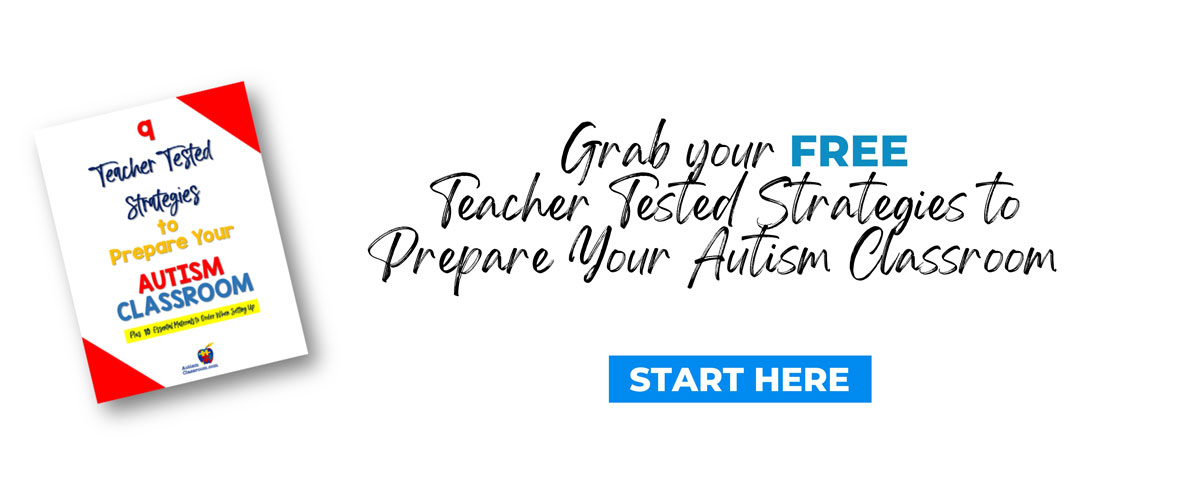
All young children explore the world through the five senses.
This is why, if you teach toddlers or preschoolers, you might find them touching everything, staring at moving objects or mouthing non-edible items.
While all children can benefit from sensory play, this is especially true for kids with autism. So let's look at sensory activity ideas that you can use in your preschool classroom. By implementing these sensory activities, you will see more engaged learners, reduced anxiety levels, and better regulation of sensory stimuli.
Sensory Play Benefits for Children with Autism
Sensory play is any activity or game directly engaging one of the five senses. To promote healthy sensory exploration, you can set aside time specifically for sensory play.
There are numerous benefits of sensory play such as:
- Increases learner engagement and focus. Students with autism need sensory play to prepare their minds to learn. Activities like manipulating objects or doing heavy work decrease anxiety. It also can prime the brain to better process new information.
- Improves regulation of sensory stimuli. Children with autism can become overwhelmed with loud sounds, bright lights, and other sensory input. Sensory play can be a healthy way to process these stimuli, giving kids a sense of control over their environment.
- Creates a positive classroom environment. Sensory activities keep learners focused, calm, and eager to learn. You can improve classroom management and create a positive learning environment when students are engaged in captivating activities.
- Develops language, communication, and social skills. Children with autism often struggle to communicate with other students. Through sensory play, kids develop language, spatial reasoning, social connections, motor skills, and problem-solving skills.
4 Sensory Activities for Autism in Preschool
Planning quality lessons that incorporate sensory play does not have to be difficult. Below, you’ll find four sensory games and activities for students with autism.
1. Play with dough, slime, mud, or water beads
Grab non-toxic dough, mud, moon sand, beads, or other squishy materials. Your preschoolers will love playing with and kneading the materials into various shapes. To contain the mess, you can go outside or use plastic bins to create sensory stations for each child
.
Depending on your students, you can add food coloring, scents, glitter, or other small objects into the mix. Be sure to watch them so that they don’t taste or eat inedible objects.
2. Color and Paint and Mess Up Our Wrecked Printable Worksheets
The “Wrecked Printable Worksheets” are engaging printables your little learners can draw, glue or paint on. They are meant to be messy, sensory-friendly activities that promote conversation and interaction. You can even put dough, string, paper, or anything you have on hand over the worksheets.
With the Wrecked Printable! Sensory Lessons for SUMMER, visual supports are built into the page for students with autism and related communication needs. These are meant to provide hands fun activities to students with a sensory element.
The summer edition, like the spring, fall and winter, still has the vocabulary and picture support on the side for students who need support with communication.
The Wrecked Printable! Sensory Printables (SUMMER) are worksheets that guide a sensory activity. They are meant to end up messy and covered in a fun sensory experience. Feel free to add your own twist and add your own sensory materials to the lesson…they are just a starting point. Each page has a few communication images to spark discussion about the activity.
Also, the activities are linked to the Common Core Speaking and Listening Standards for grade 1 (some for Kindergarten) to attempt to increase communication during the sensory activity.
With all of the worksheets, you can keep it clean or add as many messy components as you want.
It also makes sure to incorporate fun summer themes that work well for any ESY lessons or homeschool summer review.
My favorite is the cotton candy worksheet. How great would it be to pair this with a sensory experience of tasting some cotton candy as well?
With places for pointing to words and pictures, these printables teach students how to answer questions, ask questions, and connect to the current topic. Preschoolers or elementary age students improve fine motor skills through sensory play by coloring, painting, or drawing on the worksheet.
All you need to implement this low-prep activity are the worksheets and some sensory/art supply materials.
3. Plan Physical Exercises
Students of all ages need time to get their energy out, which is especially vital for children with autism. Heavy work, jumping rope, pushing and pulling heavy items, and using a crash pad are all ways to support your students’ vestibular balance and proprioception (two additional ways to get sensory input.)
Consider creating exercise stations that students can choose from. People shake those sillies out for a reason!!! Allowing preschoolers with autism to do physical exercise before a quiet activity can help promote engagement and sensory regulation for some children.
4. Use Sensory Picture Cards For Sensory Play
You can easily create sensory bins with picture cards for your students. All you need do is print the cards and laminate them for continued use.
These sensory bin visual supports are picture cards to go on a sensory box or they can be used for students to use to make a choice from a classroom sensory choice board. There are 120 sensory related picture cards with the written word. AND... there are choice boards with blank squares.
You can find this gem in the store here.
Promoting sensory exploration for preschoolers with autism increases learner engagement, promotes self-regulation, and hopefully can reduce anxiety. Designing sensory-focused lessons and games does not have to be complicated. Use printables, materials you already have on hand, and a little creativity to bring even more fun into the classroom!










